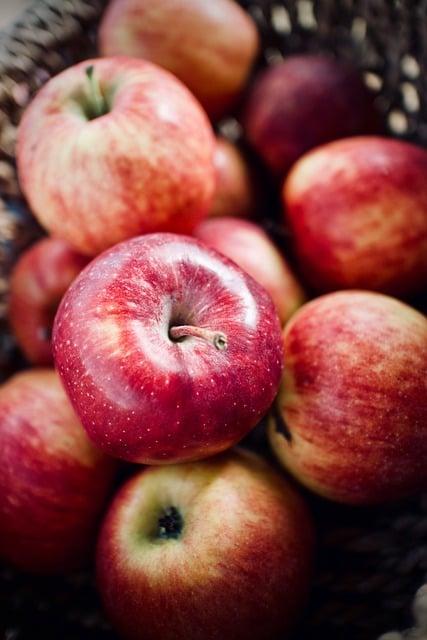In the kaleidoscope of dietary trends and nutritional advice, the concept of low-glycemic foods has emerged as a compelling focal point for health enthusiasts and skeptics alike. As we navigate the labyrinth of food choices that promise everything from weight loss to enhanced energy levels, the question arises: are low-glycemic foods truly a panacea for all, or do they hold selective benefits? This article delves into the intricacies of the glycemic index, exploring its implications on our health and well-being. By unraveling the science behind these foods, we aim to provide a nuanced perspective on whether low-glycemic options deserve a universal place on our plates or if their advantages are more personalized than they seem.
Understanding Glycemic Index and Its Impact on Health
When we talk about the glycemic index (GI), we’re diving into a world where foods are ranked based on how quickly they raise blood glucose levels. This ranking can be a helpful guide for those looking to manage their energy levels or improve their overall health. Foods with a low glycemic index are digested and absorbed more slowly, leading to a gradual rise in blood sugar. But does this mean they are the right choice for everyone? The answer is not as straightforward as it might seem.
- Personal Health Goals: Individuals aiming for steady energy levels or managing diabetes may benefit from low-GI foods. However, athletes or those needing quick energy might require higher-GI options.
- Dietary Balance: It’s essential to focus on a balanced diet rather than just GI numbers. Low-GI foods aren’t always the healthiest; consider nutritional content, such as fiber, vitamins, and minerals.
- Individual Variability: Each person’s body responds differently to foods. Factors such as genetics, activity level, and overall diet can influence how beneficial low-GI foods are for someone.
Understanding the nuances of the glycemic index allows for more personalized and informed dietary choices. While low-GI foods can be beneficial for some, they aren’t a one-size-fits-all solution.

Debunking Myths: Low-Glycemic Foods and Weight Loss
In the quest for healthier eating, the term “low-glycemic foods” often surfaces as a magic bullet for weight loss. However, while these foods may offer some benefits, they aren’t necessarily the golden ticket for everyone. The glycemic index (GI) measures how quickly a food raises blood sugar levels, and while low-GI foods are generally considered better for blood sugar control, this doesn’t automatically translate to weight loss for all individuals. Factors such as portion size, overall diet composition, and individual metabolic responses play a significant role in determining their effectiveness.
- Individual Metabolism: Each person’s metabolism reacts differently to various foods, including those with a low GI.
- Overall Diet Quality: Consuming low-GI foods does not compensate for a diet high in calories or unhealthy fats.
- Portion Control: Overeating low-GI foods can still lead to weight gain if caloric intake exceeds energy expenditure.
It’s essential to consider these factors and understand that while low-glycemic foods can be a part of a balanced diet, they are not a one-size-fits-all solution. Balancing these foods with other healthy dietary practices is key to achieving desired health outcomes.

Personalized Nutrition: Tailoring Glycemic Choices to Individual Needs
In the ever-evolving world of nutrition, the concept of personalized diets is gaining traction, especially when it comes to glycemic choices. Low-glycemic foods have been touted for their ability to stabilize blood sugar levels, but are they the universal solution? Not necessarily. Each individual’s body responds uniquely to different foods, influenced by factors such as genetics, metabolism, and lifestyle. This is where personalized nutrition steps in, offering a tailored approach to dietary choices that consider these variables.
Instead of a one-size-fits-all approach, consider the following factors when tailoring glycemic choices:
- Genetic predispositions: Some people may naturally process carbohydrates more efficiently than others.
- Activity levels: Athletes or highly active individuals might benefit from different glycemic index foods compared to those with sedentary lifestyles.
- Health conditions: Conditions such as diabetes or insulin resistance necessitate careful monitoring of blood sugar levels.
- Personal preferences: Taste, cultural significance, and dietary restrictions play a crucial role in food choices.
By considering these elements, individuals can make informed decisions about their diet, ultimately leading to improved health and well-being. Personalized nutrition emphasizes the importance of listening to your body and understanding its unique needs.

Practical Tips for Incorporating Low-Glycemic Foods into Your Diet
Incorporating low-glycemic foods into your daily meals doesn’t have to be a daunting task. Here are some practical tips to make the transition smoother:
- Swap Your Staples: Begin by substituting high-glycemic staples with their low-glycemic counterparts. For example, replace white rice with quinoa or barley, and opt for whole grain bread instead of white bread.
- Embrace Vegetables: Fill half your plate with non-starchy vegetables like spinach, broccoli, and bell peppers. Not only do they have a low glycemic index, but they’re also packed with essential nutrients.
- Snack Wisely: Choose snacks that have a lower glycemic impact, such as nuts, seeds, or a piece of fruit like an apple or pear. These options can keep you satisfied without spiking your blood sugar.
- Balance Your Meals: Pair low-glycemic foods with protein and healthy fats. This combination can help slow the absorption of carbohydrates and maintain steady energy levels.
By making these small changes, you can enjoy a diet that not only supports balanced blood sugar levels but also enhances overall health and well-being.






























